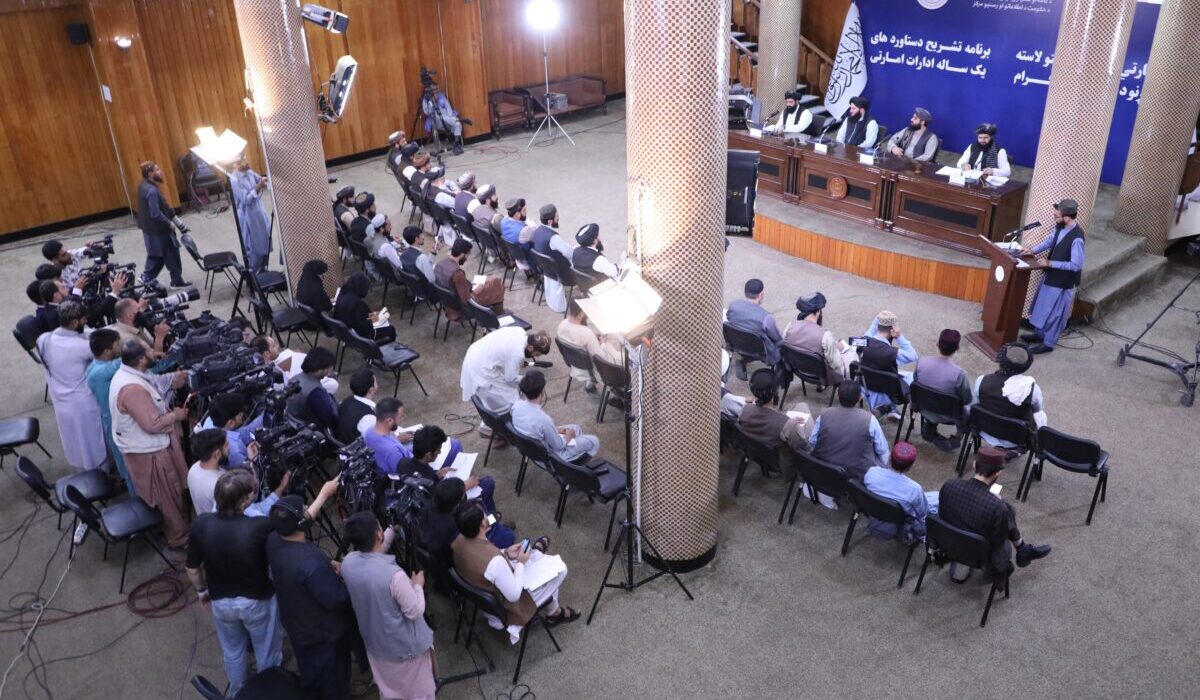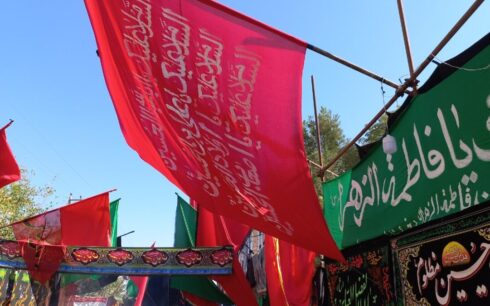The Taliban-run Ministry of Information and Culture has recently held meetings across several Afghan provinces, ordering local media outlets to align their content with the Taliban’s directives.
In joint meetings with media executives and journalist support organizations, Taliban officials instructed media leaders to adapt their programming to reflect their policies.
Shamsuddin Mohammadi, the Taliban’s director of information and culture in Faryab, posted on social media platform X, saying, “I ask media officials to adjust their broadcasts to reflect our policies and to highlight government achievements.”
Taliban-led meetings with local journalists and media leaders have included senior officials, such as provincial governors and Taliban police commanders. At a similar meeting in Nuristan Province, Nuristan’s governor, Zaid al-Abideen Abed, urged journalists to promote “positive views” of the Taliban’s leadership and stressed the importance of media in shaping public opinion.
“After our victory, we are now in a significant media battle,” Abed said. “Media should promote positive thoughts, as public sentiment is shaped through media coverage.”
Some journalists expressed concern that these directives aim to prevent the release of reports that conflict with the Taliban’s narrative. According to several journalists, the Taliban’s demands further restrict freedom of expression and pressure reporters to broadcast pro-Taliban stories.
“Government should not steer the media in whatever direction it wants,” said Mustafa Shahryar, a local journalist. “Media should operate freely according to the principles of free speech to ensure that information flows accurately. Our request is for media to operate independently and within the bounds of free expression.”
In addition to these recent directives, the Taliban have already imposed visual media restrictions, suspending televised imagery in the provinces of Kandahar, Takhar, Maidan Wardak, and Badghis. Most recently, the Taliban-run Bakhtar News Agency in Takhar refrained from sharing images of a meeting with students and young people on social media, a practice that remains routine in other provinces.
Journalists in Takhar warn that Taliban-imposed restrictions are pushing the province’s national television and visual media outlets toward closure. One journalist, speaking anonymously due to safety concerns, noted, “The regulations introduced by the Ministry for the Promotion of Virtue to prohibit filming have silenced television networks, and the national broadcaster is on the brink of collapse.”
Earlier, the Taliban had also banned live political broadcasts and provided media outlets with a list of “trusted” experts approved for on-air commentary.





